Tale of an evening at the Uffizi. What the museum looks like at sunset (and what visitors think of it)
It is inevitable: thinking about how many people storm the Uffizi during daylight hours can inhibit the desire to visit one of the most beautiful and important museums we have in Italy. So many people may feel discouragement and even a certain nervousness at the idea of the crush that is created particularly in the rooms that hold the Florentine museum’s best-known masterpieces , such as the Botticelli room, where the Birth of Venus and the Primavera are displayed, or the room with Michelangelo’s Tondo Doni, or even the room with Leonardo da Vinci’s works, or the line of people waiting their turn to photograph the octagonal Tribune room one at a time. And then the solution might be to go to the Uffizi between late afternoon and evening, because in this time slot the situation is distinctly different. Not to mention that this also gives the opportunity to admire the works of art and to walk the corridors of the museum in a light that becomes more and more suggestive, from dusk until dusk.
For the past few weeks, the Florentine museum, every Tuesday, and only on Tuesdays, until next December 17, has decided to offer this opportunity to anyone who wants to visit the Uffizi extraordinarily in the evening hours, so unlike all other days the closing time is moved from 6:30 p.m. to 10 p.m., although the notices and closing operations begin at 9:30 p.m., with last entry allowed at 8:30 p.m. “These continuous evening Tuesdays,” museum director Simone Verde told us, “are designed to especially facilitate and incentivize the citizens of Florence to ’reappropriate’ and rediscover their main and most identifiable museum, the Uffizi Gallery, by providing a schedule that is more compatible with the dynamics and needs of those who live and work in the city.” What then are the public’s feelings? What are the expectations? Are visits to the Uffizi in the evening appreciated? Are they livable? Are there aspects to be improved? We tried to find out directly on the spot, on a Tuesday in mid-May.
Entering at around 7 p.m., the comparison with more usual times becomes immediately apparent as soon as we go up to the second floor, where the museum tour begins: “Few people, more tranquility,” we immediately told ourselves. The Giotto and Gentile da Fabriano rooms are almost empty, the Botticelli room is livable, a small group of people are closely admiring the Birth of Venus, there are some linger on the details, some take a selfie with the work to take home a souvenir of that alternative evening spent in a museum, some comment on the beauty of that masterpiece of art history with the person accompanying them in this experience, but all in a very calm situation, without the hall crowded as it usually is at this time, in spring, afternoon or morning. We manage to stay a few minutes to observe the Tribune and even take a few photos. Even the Leonardo da Vinci and Michelangelo rooms are not taken by storm. Small groups of tourists, mostly foreigners, follow their guided tour, but with much respect toward other visitors; young and middle-aged couples and companies of friends walk through the museum rooms, reading the captions and taking their time to contemplate the paintings. In short, a pleasant and comfortable situation, we would say, such that everyone can view the works.

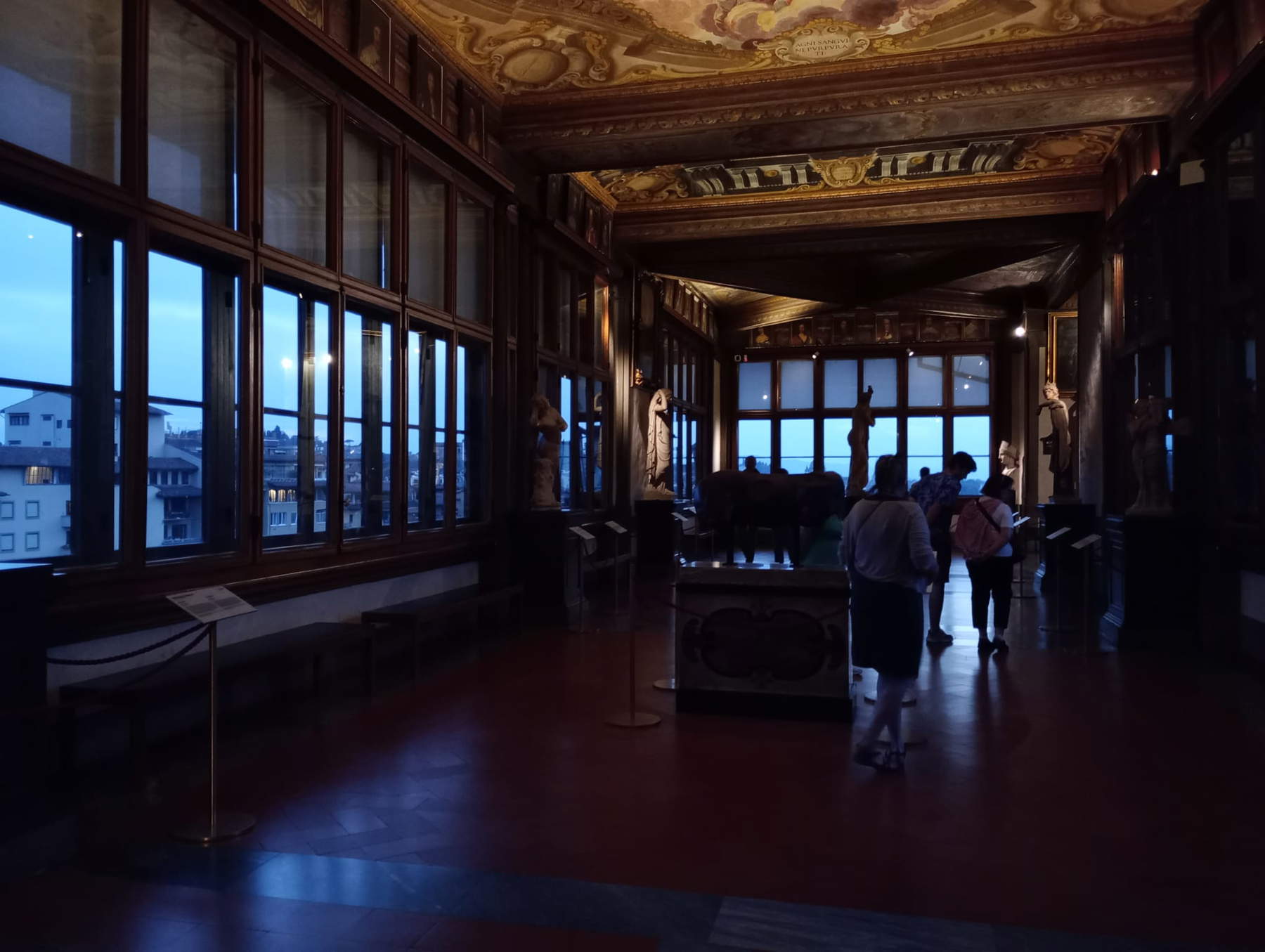
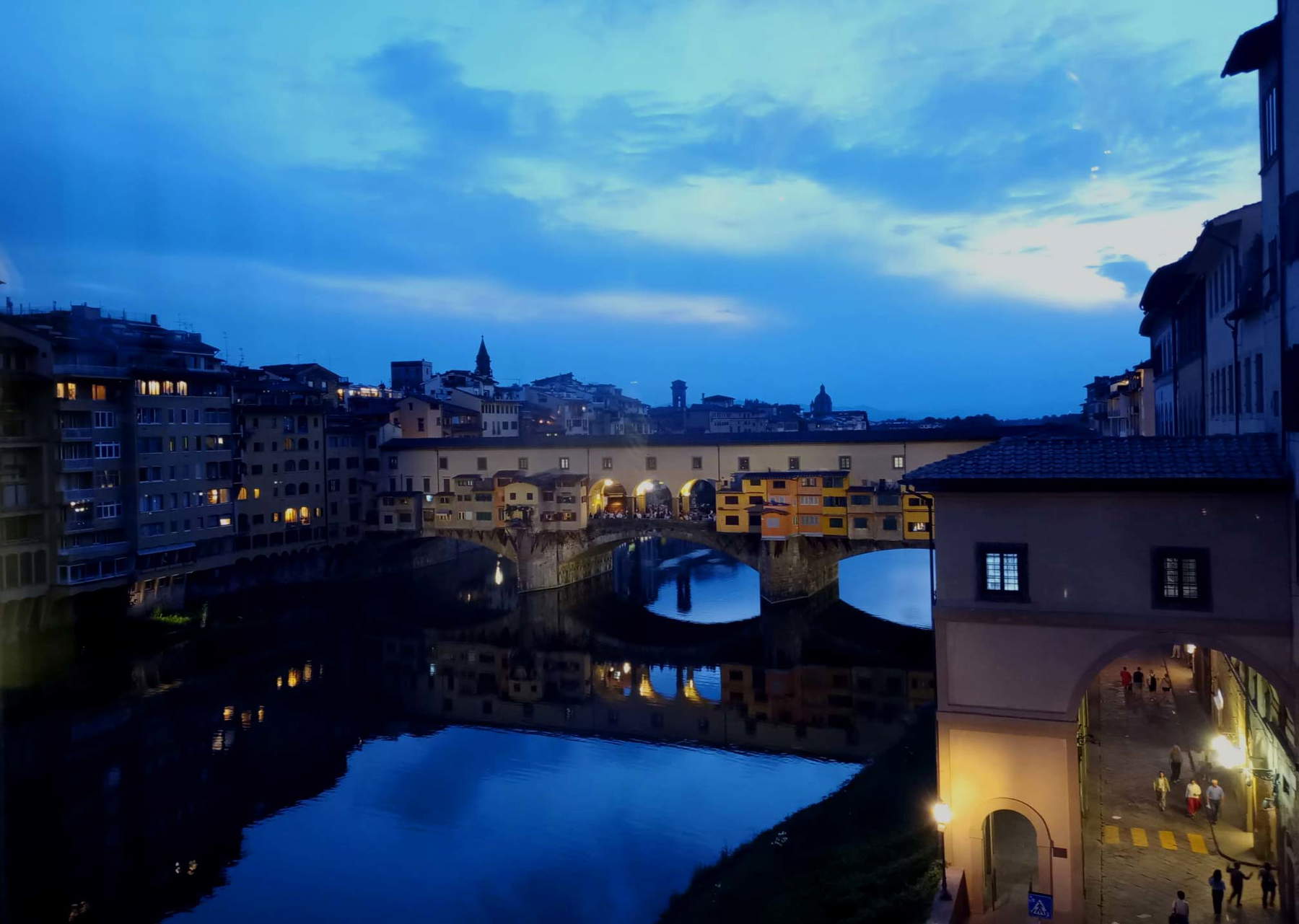
It is curious to note how, in these two hours in which we wander through the rooms of the museum, the most spoken language at the Uffizi is probablyEnglish, with the exception of a few who speak French, and how the presence of Florentines or at any rate of Tuscans is rather weak. Yet precisely for citizens this should be an opportunity, to see the collections of Tuscany’s largest museum in the evening light and with greater quiet. Still, visitors continue to enter until just before the allowed hours, at a dilatory pace. What will have prompted these people to come to visit the Uffizi in the evening, considering then that the last people to enter will only be able to stay for an hour? We ask some visitors, and basically they all answer almost the same thing, which is because it is quieter, because they are busy during the day, and to have adifferent experience.
“We are tourists, we come from Bari, so we don’t often come to Florence; we are only here three days,” a young student couple tells us. “Visiting the Uffizi at this time ensures we have time to look at other things as well, since museums in Florence close early.” Besides, they comment enthusiastically, “it’s a nice initiative, very atmospheric and also very convenient.”
“We chose to come in the evening to have a chance to see the works better, more quietly, with fewer people,” two roommates, a twenty-one-year-old student and a thirty-seven-year-old professor who live in Florence but are originally from the Marche region and he from Sicily, tell us. “It’s also an opportunity for the citizens themselves,” he tells us, “since during the day, as soon as you enter, you realize the impossibility of going even ten meters in peace,” also complaining that “the gallery staff cares a lot about order, but they don’t deal much with the noise.” “It would take,” he concludes, “a little more silence, in my opinion, when looking at the works!”
Two ladies in their 50s tell us that they came from Cortina d’Ampezzo and arrived just today in Florence. They tell us that they had been recommended this evening experience: “They told us that it is beautiful, that there is nice light, that it is more fascinating, and so we took the advice. We were curious.” We then meet Anna, a Florentine doc, who has subscribed to the Uffizi: she confesses to us that she always comes in the evening for a very simple reason, and she tells us this with a hint of complaint, but also a bit of resignation: “mornings are unattractive, there are too many people. As in almost all museums in Florence, there are too many people, and the Florentines suffer as a result.”
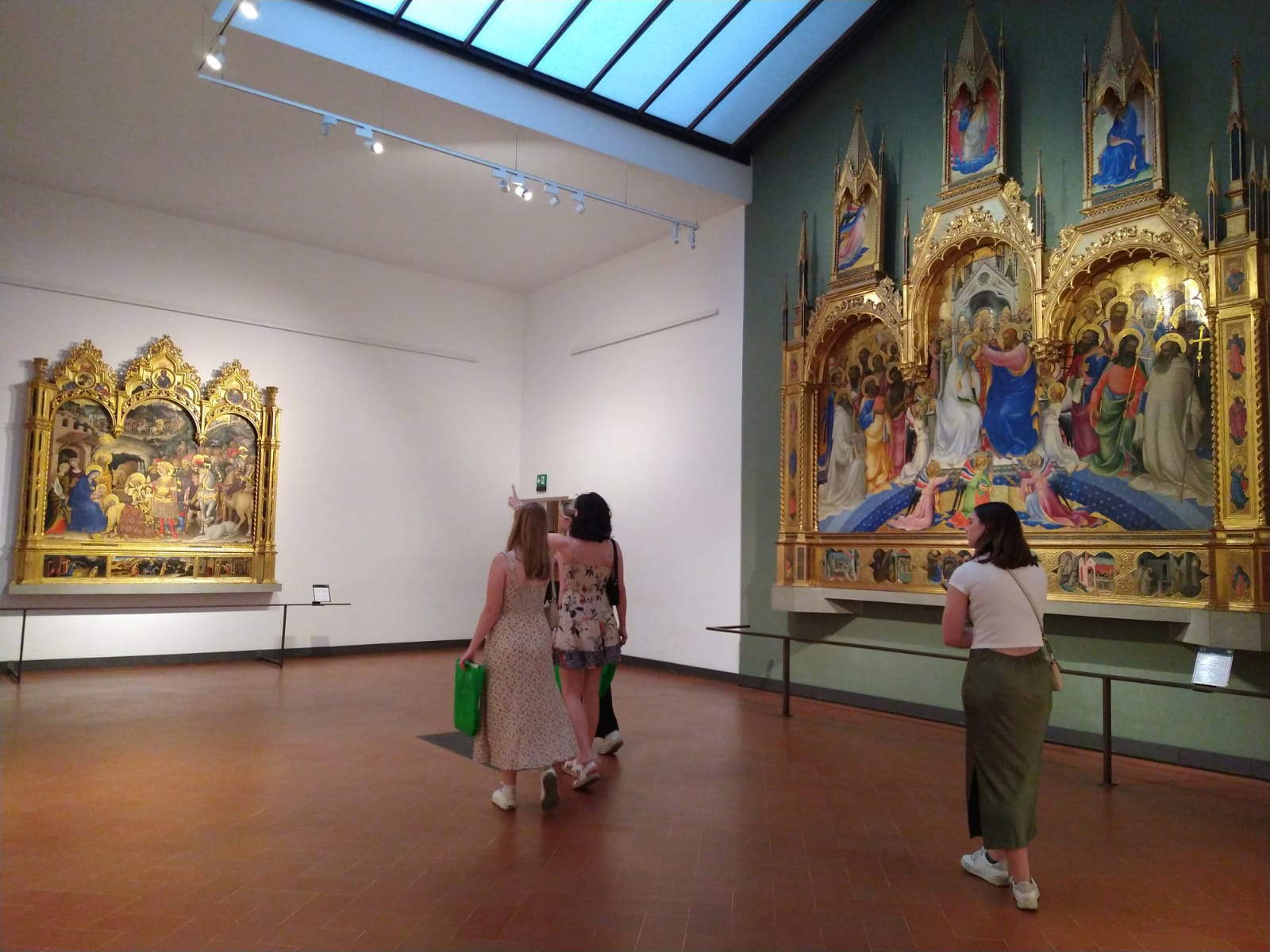
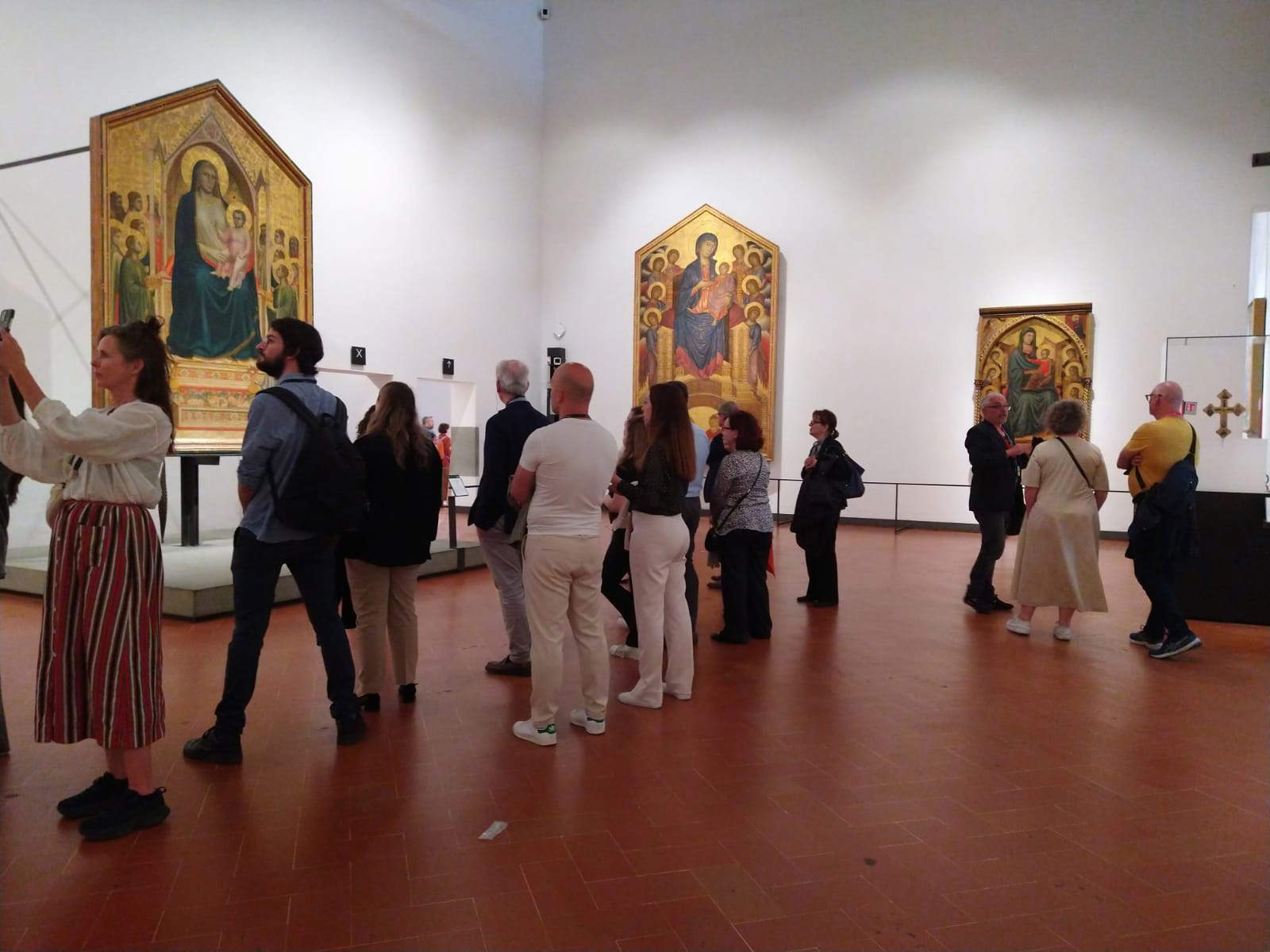
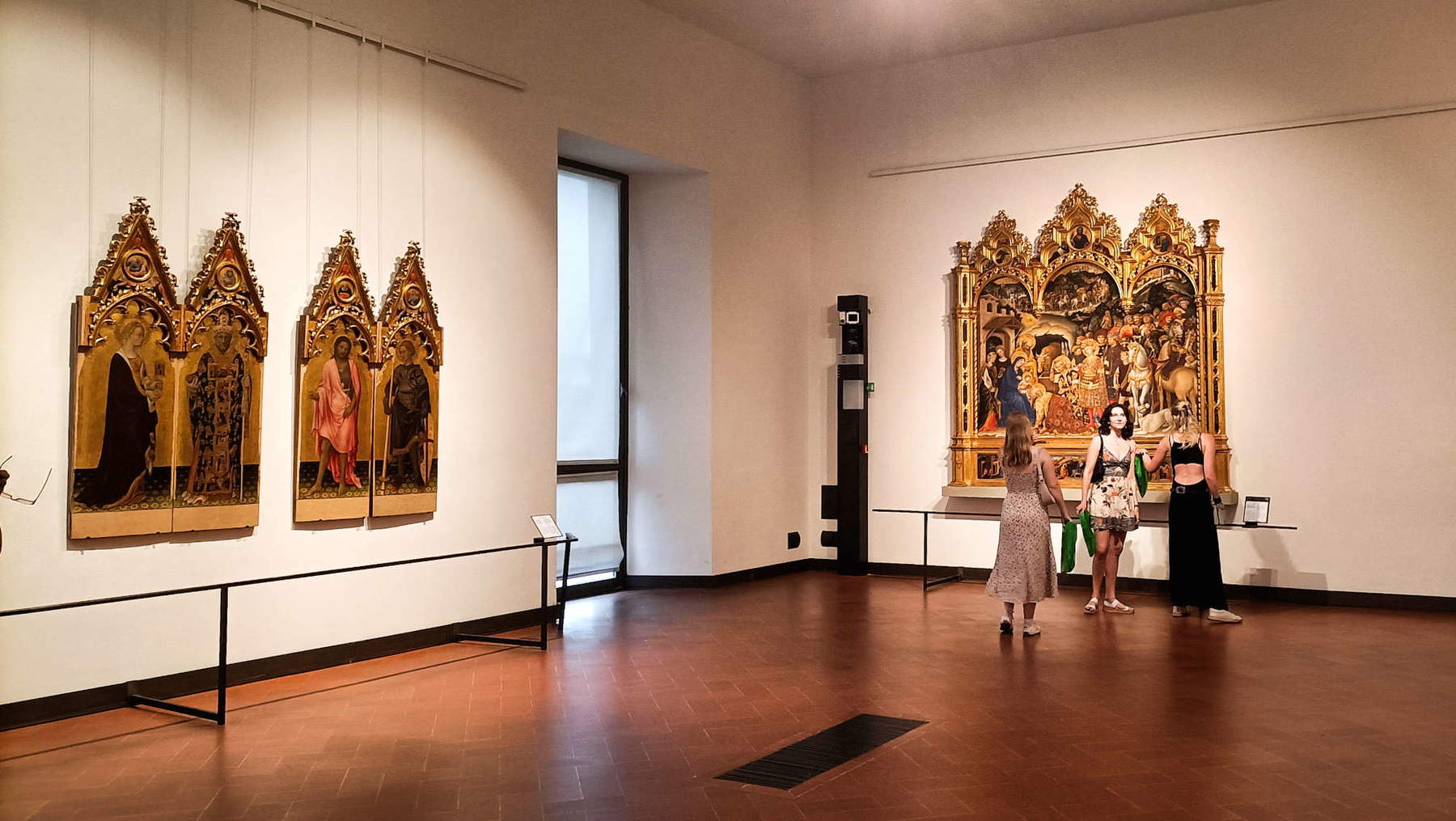
“I’m curious to see how the perception of the works changes as it gets dark,” Avery, a 21-year-old student from Florida, explains instead. “I had been to the Uffizi once before, during the daytime, and I really enjoyed it. A friend of mine tried the evening tour and recommended it. I can’t wait to see what the works will look like in a different light.” A middle-aged manager and administrative officer who arrived from France are also looking for a special light, a sunset: that’s why they booked an evening visit to the museum. “Being able to see the museum in the sunset hours is really a nice initiative, as well as evocative,” they comment.
Everyone, in any case, called it a nice initiative. Promoted with high marks by the foreigners, who also came from far away, such as Estefania, a doctor who even came from Ecuador to visit one of the museums she most wanted to see in Italy and who was pleased with the visit because, she tells us, “it is a museum that offers a truly complete experience” and because she felt really comfortable as she walked through the halls and lingered on each work, which she found well detailed, also thanks to the help of the audio guide. Or like Angelo, an Italian-American who arrived from New Jersey with his family: “An opportunity we jumped at! The museum is really beautiful, one of the most beautiful I have ever visited.” And then there is Amy, who came from Ireland, who thinks it is a really special initiative, “a fantastic experience and a unique opportunity to admire the works of the museum in the evening, with the possibility, not to be underestimated, of being able to better organize other visits during the day.”
Italian tourists also appreciate the initiative. Gaia, from Milan, a student at the Academy of Fine Arts in Venice, is happy to be able to have this experience: “I think it is a wonderful idea and it would be nice if it were also offered several times a week. Considering the size of the museum, it would be nice to allow people to enter in the afternoon and then enjoy a more extended visit in the evening. Not just limiting it to daily hours, but also offering this opportunity in the evening is definitely a positive benefit.” “In my case,” he explains, “it was an opportunity that turned out to be very useful, because I arrived yesterday and have to leave tomorrow. I wouldn’t have had any other time available, so this schedule fitted perfectly into my plans.” “I consider it an extremely positive thing, appropriate and useful for that group of users who cannot come during the day,” Giovanni, a retiree in his seventies who is Sicilian but lives in Calabria, also tells us. We stop him who has just finished making a phone call. He was telling his interlocutor how beautiful the Uffizi is at night. We take the opportunity to chat, and he confesses that coming to Florence is always an enchanting experience for him. “I have visited the Uffizi several times, the last one five or six years ago, but never in the evening. I wanted to have that experience, and see Botticelli’s and Michelangelo’s works again in a different light. It’s just that the beauty of everything in here engages me and so I necessarily spend my time there. We try to move forward.” He finally used a very particular comparison Fred, an 18-year-old London boy visiting the Uffizi with two other girls in their early twenties, students like himself: “This is my aperitif,” he said. “I love going to museums and this is a very nice opportunity because you can do it in the evening. Like it’s an aperitif,” he tells us, smiling.
Although the initiative was fully promoted by all those interviewed, some, however, voiced some criticism of the ticket price, which stipulates, even for the evening, admission at the full cost of 25 euros even if one enters the museum at eight o’clock in the evening to ultimately stay an hour and a half, like those who enter at three o’clock in the afternoon, for example, thus having more time to see the collections at leisure. Reductions and gratuities also remain unchanged during evening visits. “We find this of the evening visits a beautiful initiative, super approved, but the ticket seems excessive,” complain two twenty-eight-year-old girls from Sesto Fiorentino. “We would like a more subsidized price at least for those who are local residents, for those who live in neighboring areas--maybe a discount, that’s it.”
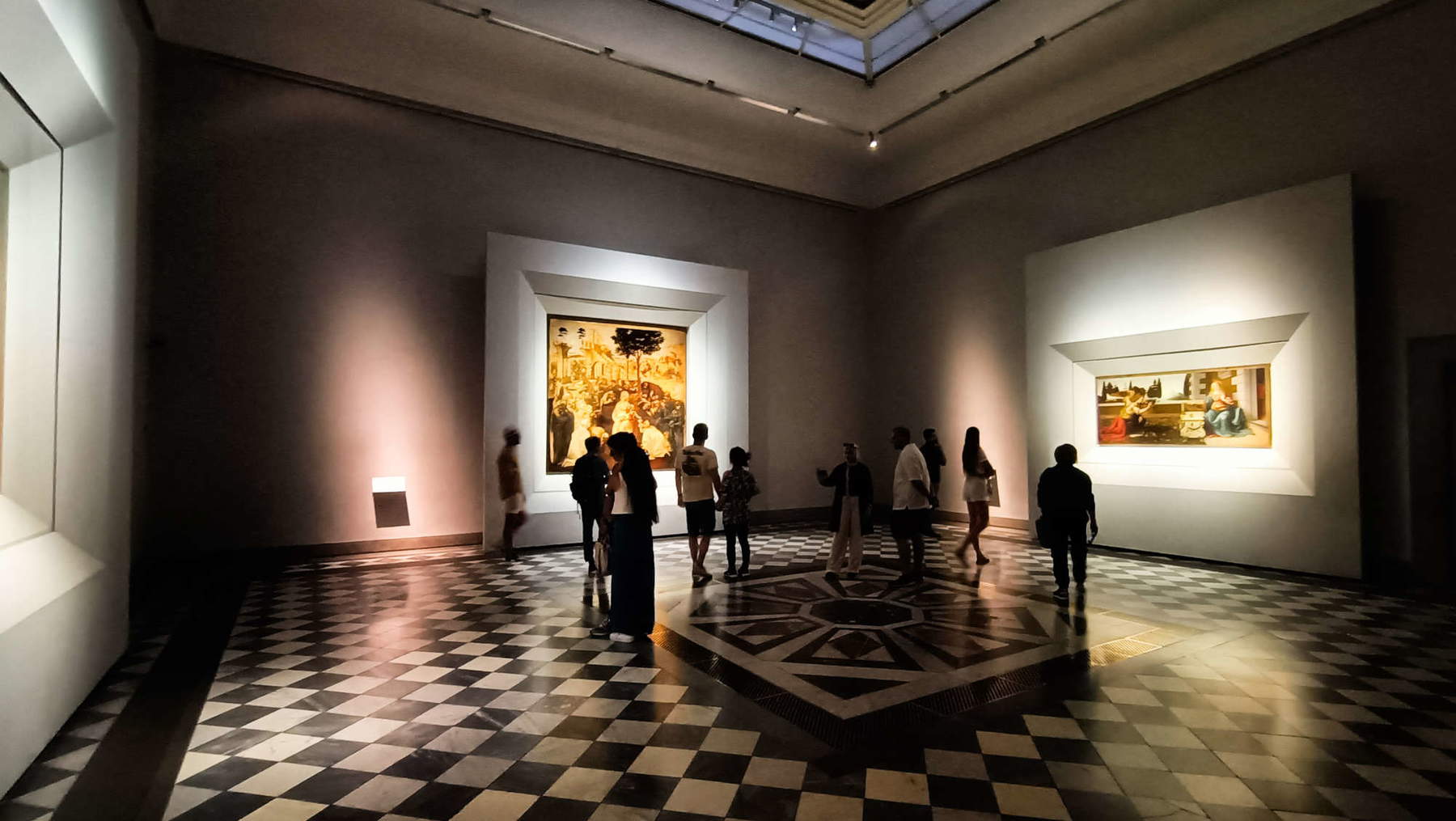
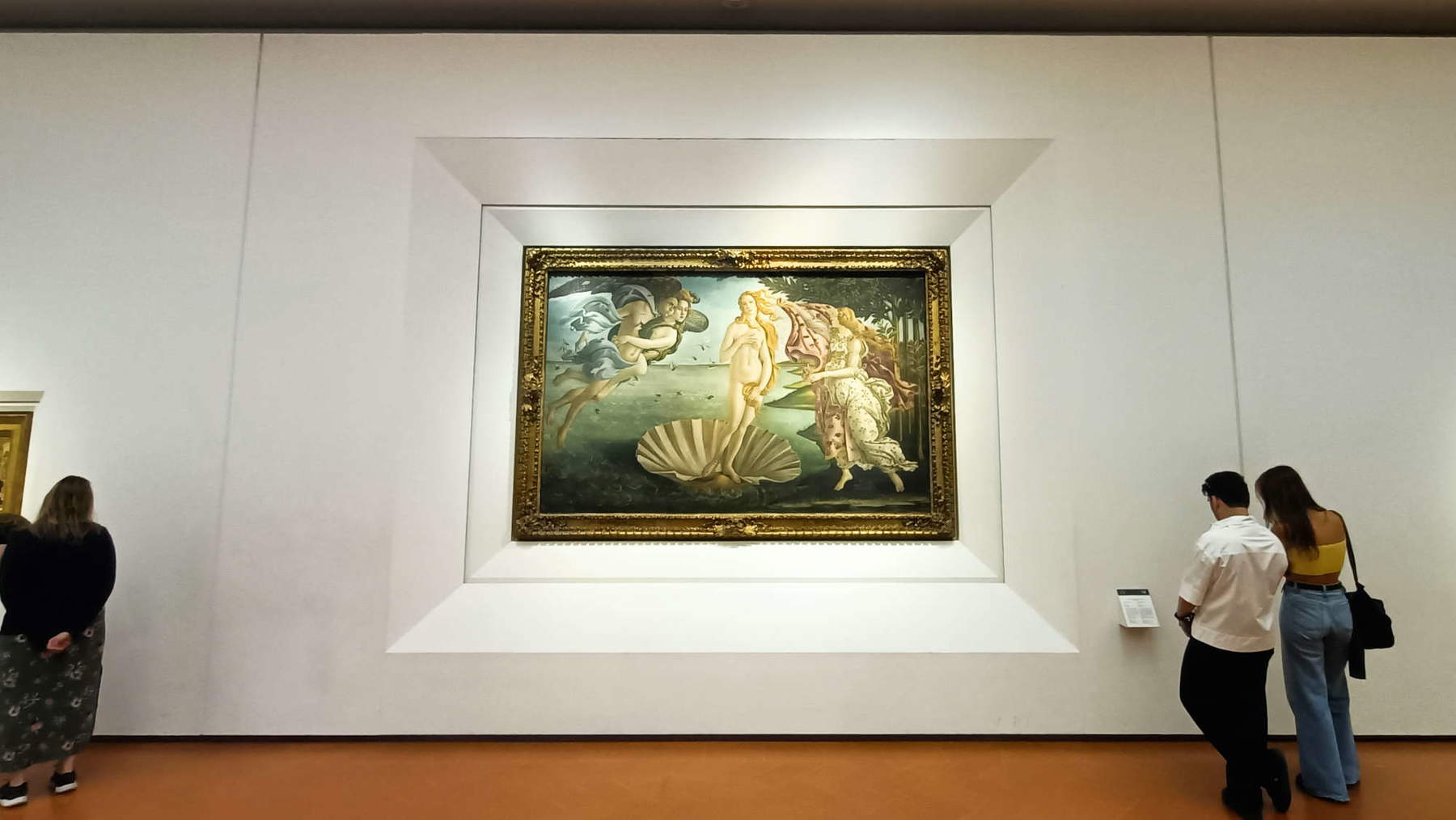
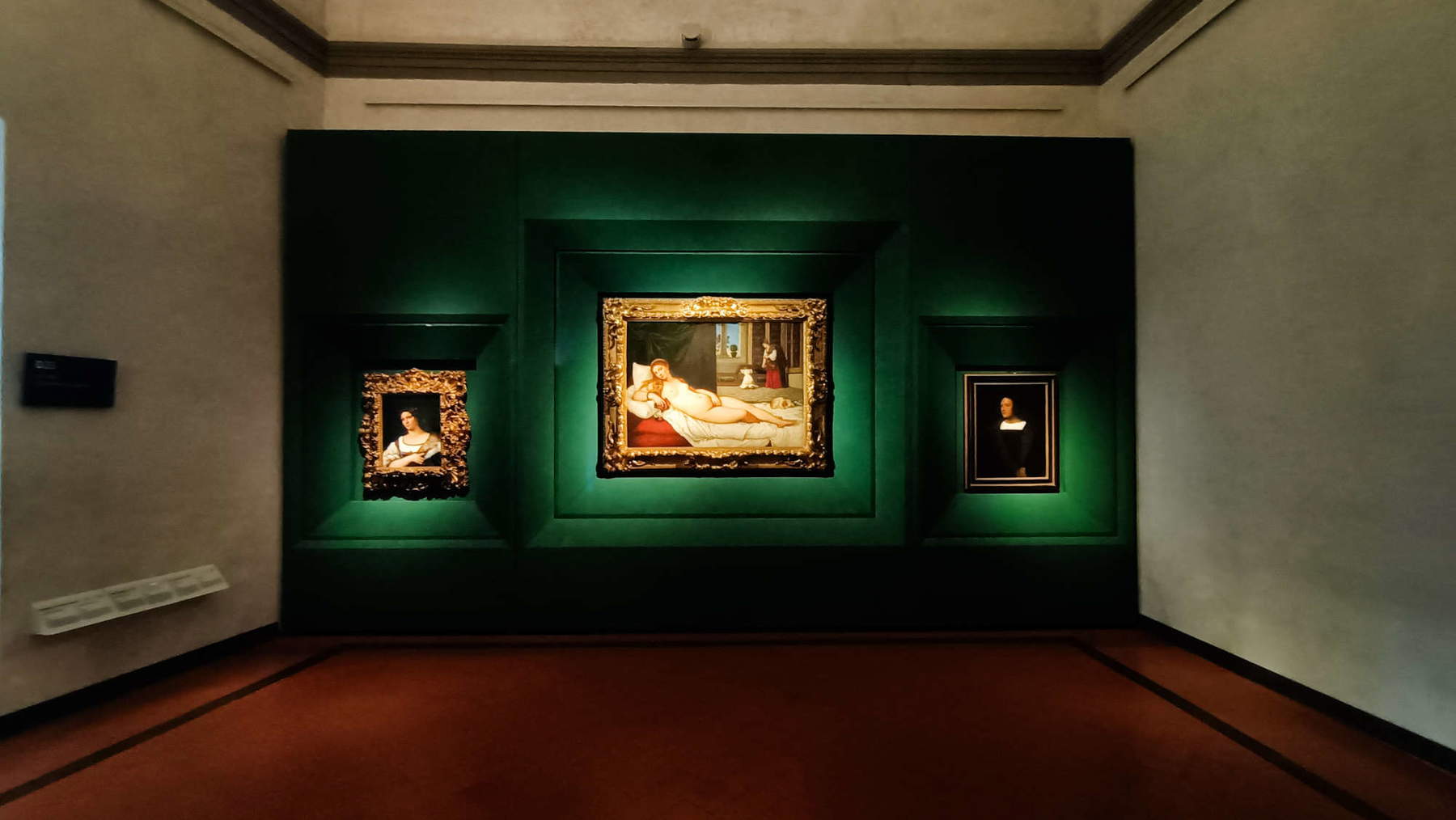
She makes a different kind of reflection instead Gaia, the girl from Milan who studies in Venice. “I am lucky enough to get in for free, which is great, but I am a bit critical about the average ticket price. Personally, I would like to see more extensive free access, for any art visit and cultural space. I understand that the cost of the ticket can help maintain such a valuable place, but I would be happy if the categories of free access were extended to more people, such as students of all kinds of courses and young people up to age 26. It would be a way to make art and culture more accessible to everyone.” “At the end of the tour we could say whether it was worth it or not,” the two ladies in their 50s from Cortina d’Ampezzo commented more hastily instead. However, of a different opinion are the two middle-aged Frenchmen, who pointed out that entering the Uffizi is no more expensive than elsewhere and that in addition “there are also many more resources and works than in other places.”
“I think it’s a utopia to put museums free, because they have to be maintained anyway. You also have to be realistic,” the student from Bari, who entered with the reduced €2 ticket, reserved for EU citizens in the 18-25 age group, answers us with conviction. “At least there are reduced tickets for those who study, for those who don’t just want to see these things in books.” And yet another thought advances Emanuela, a 50-year-old tour escort who lives in London but is in Florence for work. “The ticket is a bit expensive, a visitor has to be very motivated, however, I must say that if you find the museum so empty, maybe it is worth it.” He adds, "I am of the opinion that tourism is a good thing, but I realize that there is overtourism everywhere.... There are a lot of people, not in the Uffizi specifically, but all over Europe, who go around because they are being dragged. Maybe it would be better then to aim to pay a little bit more to have more conscious tourism. This is a museum that already selects anyway; I am for a minimum of more selection."
Meanwhile, we, too, continue our visit. We look out the stained glass windows to admire the view of the Ponte Vecchio. Evening is already falling; the corridors of the museum become more and more atmospheric, the sculptures illuminated by spotlights stand out in contrast to the semi-darkness of twilight. It’s actually quite worth it, we think. The loudspeaker announces that the museum is beginning its closing operations: it’s 9:30. The rooms we walk through are increasingly empty: there are still a few people lingering on their favorite masterpieces, on Caravaggio’s Medusa , which always fascinates every time we get a chance to see it. We, too, suffer its fascination. Then, like the last remaining visitors, we head for the exit, to leave the museum with that evening suggestion still in our eyes. And that unparalleled tranquility that makes this experience truly unique.
Warning: the translation into English of the original Italian article was created using automatic tools. We undertake to review all articles, but we do not guarantee the total absence of inaccuracies in the translation due to the program. You can find the original by clicking on the ITA button. If you find any mistake,please contact us.





























